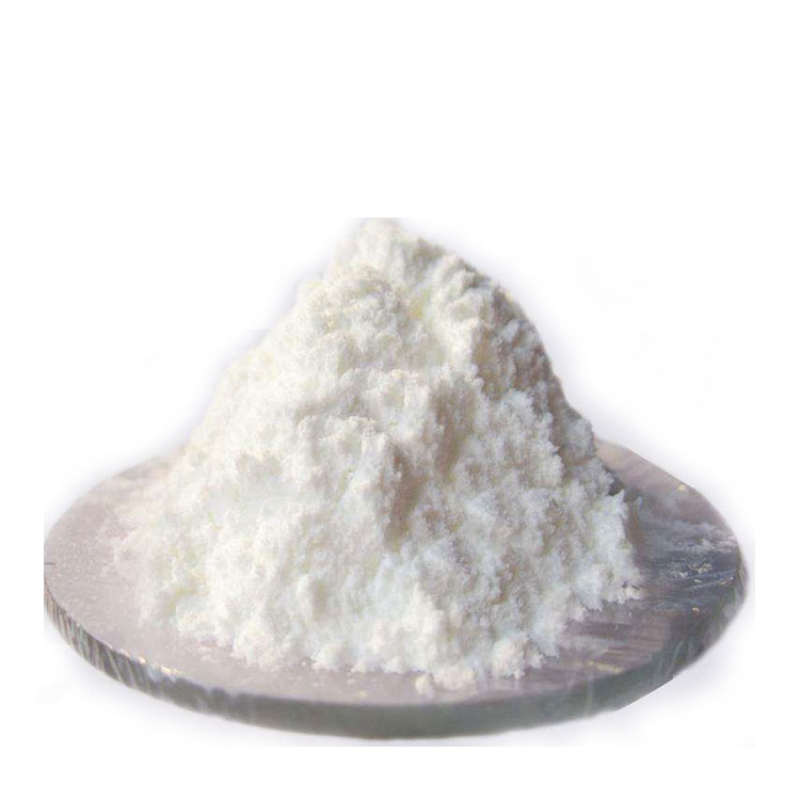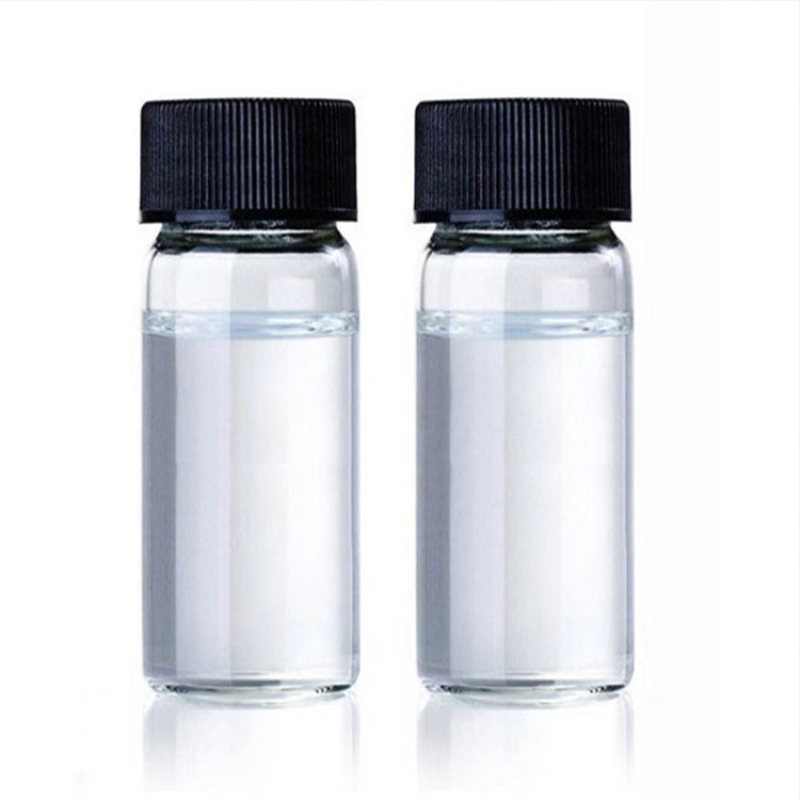Products Description of Pyrophosphoric acid CAS#2466-09-3Pyrophosphoric acid is a colorless needle-shaped crystal or a colorless viscous liquid. It forms crystals after long-term storage and is colorless glassy. Pyrophosphate has strong coordination properties. Excess P2O74- can dissolve insoluble pyrophosphates (Cu2+, Ag+, Zn2+, Mg2+, Ca2+, Sn2+, etc.) to form complex ions, such as [Cu(P2O7)2]6-, [Sn(P2O7)2]6-, etc. It is often used as a catalyst in industry to prepare organic phosphates, etc. Pyrophosphate meets silver salt to obtain white silver pyrophosphate precipitate.
Contact Now
Products Description of Phosphoric acidCAS#7664-38-2Phosphoric acid is also called orthophosphoric acid (molecular formula H3PO4). The pure product is a colorless, transparent, viscous liquid or orthorhombic crystal, odorless and very sour. 85% phosphoric acid is a colorless, transparent or slightly light-colored, viscous liquid. Melting point 42.35℃, specific gravity 1.70, high boiling point acid, miscible with water in any ratio, boiling point 213℃ (lose 1/2 water), then pyrophosphoric acid is generated. When heated to 300℃, it becomes metaphosphoric acid. Relative density 181.834.
Contact Now
Products Description of Chloroacetyl Chloride CAS#79-04-9Colorless or slightly yellow liquid with strong irritation. Soluble in benzene, carbon tetrachloride, ether and chloroform. Toxic! Irritating to eyes and mucous membranes.Chloroacetyl chloride has active chemical properties and decomposes when exposed to water and alcohol. It can be used as an acylation reagent. For example, it can react with naphthalene, cyclopropane, ethylene and other reagents.
Contact Now
Products Description of Tetradecyldimethylbenzylammonium chloride CAS#139-08-2Benzyldimethyltetramethylammonium chloride is a quaternary ammonium salt used for eye care or treatment of eye diseases. It is an ion association reagent for extraction photometric analysis and a sensitizer for metal photometric determination. It can be dissolved in water and ethanol in any proportion, and can be used with cationic, nonionic surfactants or dyes at the same time. It should not be used with anionic surfactants or additives.
Contact Now
Products Description of Vinylbenzyl chloride CAS#30030-25-2Chloromethylvinylbenzene can be used as an organic synthesis intermediate and a pharmaceutical intermediate, mainly used in laboratory research and development processes and chemical production processes.Vinylbenzyl chloride Chemical PropertiesMelting point -30°CBoiling point 229 °C(lit.)density 1.074 g/mL at 25 °C(lit.)vapor density 5.3 (vs air)vapor pressure 1 mm Hg ( 56.1 °C)refractive index n20/D 1.572(lit.)Fp 221 °Fstorage temp. -20°Csolubility Acetonitrile (Slightly
Contact Now
Products Description of Dicyandiamide CAS#461-58-5Dicyandiamide, abbreviated as DICY or DCD. It is an organic substance with the chemical formula C2H4N4. It is a dimer of cyanamide and a cyano derivative of guanidine. Chemical formula C2H4N4. White crystalline powder. Soluble in water, alcohol, ethylene glycol and dimethylformamide, almost insoluble in ether and benzene.
Contact Now
Products Description of Diethylene Glycol Ethyl Methyl Ether CAS#1002-67-1Diethylene glycol methyl ethyl ether is a chemical.
Contact Now
Products Description of Polyethylene Glycol CAS#25322-68-3Polyethylene glycol is referred to as "PEG". It is a high molecular weight compound formed by intermolecular dehydration condensation of ethylene glycol. Chemical formula HOCH2(CH2OCH2)nCH2OH. Where n is greater than 4. Average molecular weight 200-7000. The number after the commercial polyethylene glycol indicates the average molecular weight. For example, polyethylene glycol-400 means that the average molecular weight of the commercial polyethylene glycol is about 400.Colorless viscous liquid or white solid.
Contact Now
Products Description of Neopentyl glycol diglycidyl ether CAS#17557-23-2Slightly yellow transparent liquid. Soluble in organic solvents such as ketone and benzene.
Contact Now
Products Description of Triethylene glycol bis(2-ethylhexanoate) CAS#94-28-0This product is a solvent-based cold-resistant and environmentally friendly plasticizer with excellent low-temperature resistance, durability, oil resistance, UV resistance and antistatic properties, and has low viscosity and certain lubricity. This product is a special plasticizer for polyvinyl butyral (PVB safety glass) and synthetic rubber, which can make them produce low-temperature performance and low volatility. It can also be used for polyester cloth, adhesives and sealing materials.
Contact Now
Products Description of Triethylene glycol dimethacrylate CAS#109-16-0Unsaturated polyester resin (UPR) is one of the three most widely used matrix resin materials in resin-based composite materials.
Contact Now
Products Description of Oxydipropyl dibenzoateCAS#27138-31-4Dipropylene glycol dibenzoate (DPGDB) is a highly soluble benzoate plasticizer, the main component of which is dipropylene glycol dibenzoate.
Contact Now
Ethylene glycol CAS#107-21-1Ethylene glycol is the simplest aliphatic diol, with the chemical properties of alcohol, and can generate ethers, esters, or be oxidized to acids or aldehydes, and can also be condensed to ethers or replaced by halogens. It generally generates diesters when reacting with acyl chlorides or anhydrides.
Contact Now
Products Description of Poly(ethylene glycol) dimethacrylateCAS#25852-47-5 Used in food, medical and health gel materials, etc.Poly(ethylene glycol) dimethacrylate Chemical PropertiesBoiling point >200 °C2 mm Hg(lit.)density 1.11 g/mL at 25 °Crefractive index n20/D 1.467Fp >230 °Fstorage temp. 2-8°Csolubility H2O: solubleform Granular Solidcolor White to off-whiteWater Solubility Soluble in water.Sensitive Moisture & Light SensitiveStability:Stable.
Contact Now
Products Description of 1-Methoxy-2-propyl acetate CAS#108-65-6Propylene glycol methyl ether acetate (PGMEA), also called propylene glycol monomethyl ether acetate, has the molecular formula C6H12O3. It is a colorless hygroscopic liquid with a special odor. It is a non-pollution solvent with multiple functional groups. It is mainly used as a solvent for inks, paints, inks, textile dyes, and textile oils. It can also be used as a cleaning agent in the production of LCD displays.
Contact Now
Products Description of 6-Bromo-1-chloroisoquinoline CAS#205055-63-61-Chloro-6-bromoisoquinoline is a pharmaceutical intermediate and a yellow powdery solid.6-Bromo-1-chloroisoquinoline Chemical PropertiesBoiling point 349.5±22.0 °C(Predicted)density 1.673storage temp. under inert gas (nitrogen or Argon) at 2-8°Cpka1.48±0.38(Predicted)form powdercolor Light yellow to yellowSafety InformationHazard Codes TRisk Statements 25-38-41Safety Statements 26-45RIDADR UN2811HS Code 2933499090Product Application of 6-Bromo-1-chloroisoquinoline CA
Contact Now
Products Description of 6-Bromo-2,3-dihydro-4H-chromen-4-one CAS#49660-57-34-Dihydrochromone is a class of natural compounds with excellent biological activity.
Contact Now
Products Description of 1-Bromo-3,5-dimethoxybenzene CAS#20469-65-21-Bromo-3,5-dimethoxybenzene is an organic intermediate that can be prepared from 3,5-dimethoxyaniline by diazotization.
Contact Now
Products Description of POLYGLYCERYL-4 LAURATE CAS#75798-42-4Colorless liquidFactory and Equipment ShowFast delivery timeInventory 2-3 working days New production 7-10 working days
Contact Now
Styrene CAS#100-42-5 Styrene is a positive natural chemical compound having the chemical components C8H8 and structural system CH2=CHC6H5, additionally recognized as styrol, vinylbenzene, phenylethene,phenylethylene,styrene,styreen and so on. Its chemical shape is made up of a benzene ring bonded onto a vinyl team . At room temperature and pressure, styrene is a clear, colorless liquid.
Contact Now
Products Description of Dimethyl thio-toluene diamine CAS#106264-79-3DMTDA is a new type of polyurethane elastomer curing crosslinking agent, which mainly contains two isomers, namely a mixture of 2,4- and 2,6-dimethylthiotoluenediamine (the ratio is about 77~80/17~20).
Contact Now
Products Description of Nicotinamide Mononucleotide CAS#1094-61-7Nicotinamide mononucleotide, also known as β-nicotinamide mononucleotide (NMN), is a synthetic substrate of coenzyme I. At the same time, NMN is also used in anti-aging research. Studies have shown that β-NMN can also regulate the secretion of insulin and affect the expression level of mRNA. β-NMN has broad application prospects in the field of medical treatment. β-Nicotinamide mononucleotide is a product of the extracellular nicotinamide phosphoribosyltransferase (eNAMPT) reaction and a key NAD+ intermediate.
Contact Now
Products Description of Zirconium acetate CAS#7585-20-8Zirconium acetate (liquid), a colorless transparent liquid, is made by the reaction of zirconium oxychloride and sodium carbonate.
Contact Now
Products Description of Stannous methanesulfonateCAS#53408-94-9Colorless transparent liquid with the smell of rotten eggs.Stannous methanesulfonate Chemical PropertiesMelting point -27°Cdensity 1.55refractive index 1.444Specific Gravity1.550Water Solubility Not miscible or difficult to mix in water.Sensitive Air SensitiveHydrolytic Sensitivity0: forms stable aqueous solutionsExposure limitsACGIH: TWA 0.1 mg/m3; STEL 0.2 mg/m3 (Skin)NIOSH: IDLH 25 mg/m3; TWA 0.1 mg/m3InChIKeyJALQQBGHJJURDQ-UHFFFAOYSA-LCAS DataBase Reference53408-94-9(CAS DataBase Reference)EPA Subs
Contact Now


































